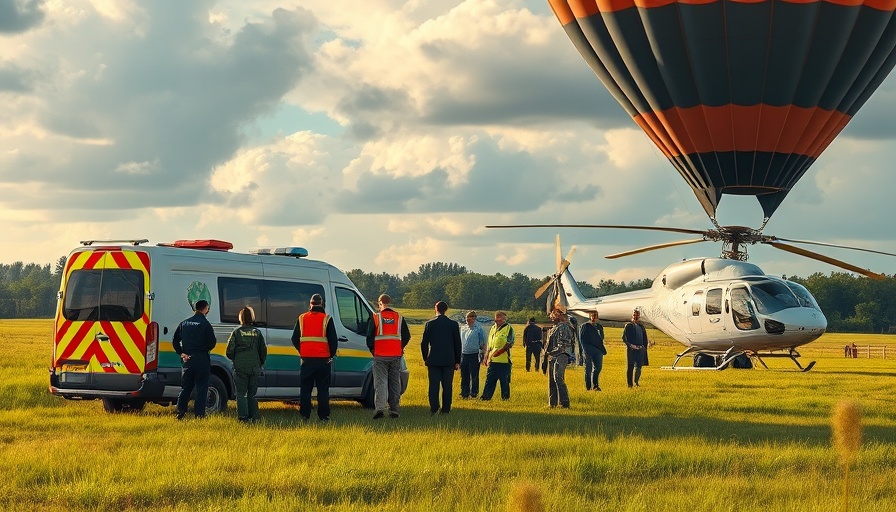
A Tragic Accident in Santa Catarina: Hot Air Balloon Fire Claims Lives
In an unfortunate accident on June 21, 2025, a hot air balloon in Brazil's southern state of Santa Catarina caught fire and crashed, leading to the deaths of eight individuals and injuring thirteen others. The incident occurred in the municipality of Praia Grande, a popular tourist destination known for its beautiful landscapes.
The Incident Unfolding
Video footage circulating on social media reveals a horrifying scene as the balloon enveloped in flames spiraled towards the ground. Eyewitnesses reported witnessing two passengers falling from the sky as flames engulfed the aircraft. According to local authorities, there were a total of 21 individuals on board, including the pilot. Of these, only 13 survived the disastrous landing.
The Impact on Victims and Families
Local officials and witnesses described the heartbreaking scenes of loss. Santa Catarina’s civil police chief, Ulisses Gabriel, shared his sorrow, stating, “Three people died hugging each other.” The emotional toll of such a tragedy ripples not only through the families of those lost but also throughout the community of Praia Grande.
Emergency Response and Government Support
In the wake of the accident, emergency services rushed to the scene, evacuating the survivors and transporting them to local hospitals for urgent care. Governor Jorginho Mello expressed his condolences and emphasized the need for thorough investigations: “We are in mourning. A tragedy has happened... what happened, why it happened.” He requested immediate support for families impacted by this disaster, urging authorities to extend their aid in any way possible.
The Safety of Hot Air Balloon Rides
The incident raises concerns about the safety regulations surrounding hot air balloon rides, which tourists often deem a thrilling experience. Generally, these rides are considered safe when conducted by licensed professionals adhering to strict regulations. However, incidents like this serve as stark reminders of the potential risks involved. Organizations overseeing travel and tourism must ensure compliance with safety protocols to prevent such tragic accidents in the future.
Reflecting on the Bigger Picture
This tragic event is not isolated, as safety concerns in adventure tourism continue to surface globally. From paragliding in New Zealand to zip-lining in Costa Rica, while these activities offer unforgettable experiences, they also present inherent risks. Recognizing these dangers is crucial for both tourists and regulatory bodies alike, as ongoing dialogue about safety standards can help prevent further tragedies and protect lives.
Future Trends in Safety and Regulation
As investigations proceed into the causes of this incident, there lies an opportunity for industry stakeholders to collaborate on enhancing safety measures for balloon rides and similar experiences. Improved training for pilots, stricter licensing requirements, and the implementation of advanced safety equipment could all play pivotal roles in safeguarding participants. The repercussions of this unfortunate event might inspire new regulations, fostering a safer environment for future adventure-seekers.
Conclusion: A Call for Awareness and Action
While the loss of life in such tragic circumstances is incomprehensible, it is imperative that we learn and act upon these lessons. Each aviation-related incident highlights the need for continued diligence in safety practices. Authorities worldwide must engage more robustly in ensuring that all adventure tourism sectors adopt the highest safety standards possible to prevent further tragedies. The impact of such incidents reverberates far beyond the immediate loss and calls for a comprehensive approach to adventure safety.
 Add Row
Add Row  Add
Add 




 Add Row
Add Row  Add
Add 

Write A Comment